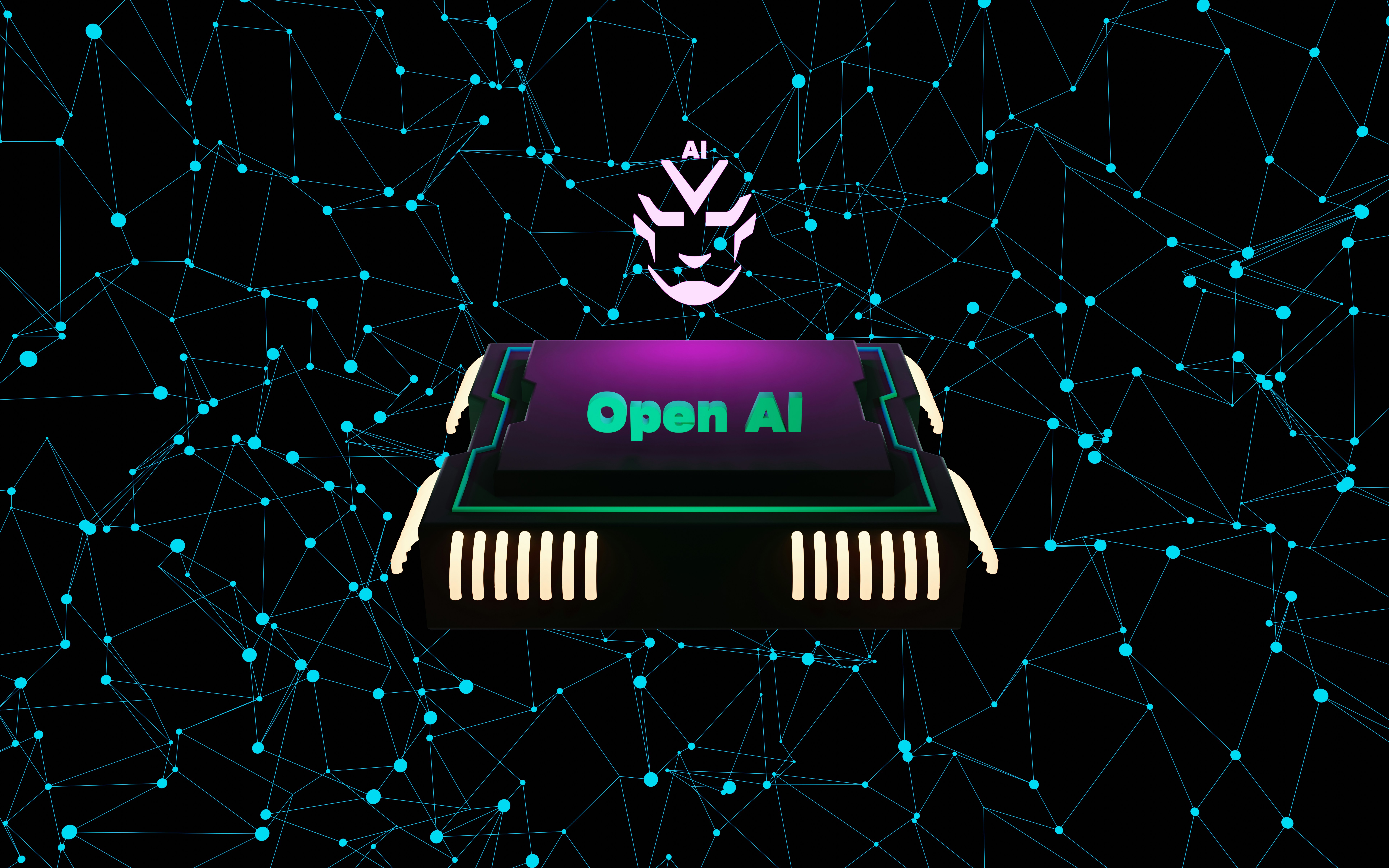Introduction to Technology Trends
In the contemporary landscape, the significance of technology trends cannot be overstated. These innovations are not merely tools; they have the potential to transform industries and redefine daily life. Companies and individuals alike must adapt to these advancements to remain competitive and relevant in an ever-evolving world. As we move towards 2025, several key trends are set to dominate the technological landscape, fundamentally altering the way we operate and interact.
One of the most significant trends is the integration of Artificial Intelligence (AI) across various sectors. This trend is already reshaping industries through automation, predictive analytics, and enhanced customer experiences. The capabilities of AI are expanding at an unprecedented pace, leading to smarter decision-making processes and operational efficiencies. Furthermore, the ongoing developments in AI hold promise not only for businesses but also for individual users, providing tailored solutions and services.
Biotechnology innovations represent another crucial area of focus. Advancements in genetic engineering and personalized medicine are paving the way for breakthroughs that enhance human health and agricultural productivity. These biotechnology trends signify a shift towards more sustainable and efficient methods of managing health and food production in response to growing global challenges.
Climate technology is also gaining momentum, with innovative solutions designed to address environmental challenges. Technologies that promote sustainability and reduce carbon footprints are increasingly essential, as governments and societies strive to combat climate change and promote environmental stewardship.
Global cybersecurity remains a pressing issue, especially as digital transformations accelerate. The rise in cyber threats demands sophisticated security measures to protect sensitive information and maintain trust among users and organizations alike. Equally, quantum computing presents unique possibilities, promising to solve complex problems that are currently insurmountable for classical computers.
These five trends—AI integration, biotech innovations, climate tech, global cybersecurity, and quantum computing—will shape our future in profound ways. Understanding their implications will be crucial as we navigate this rapid technological shift.
AI Integration: Revolutionizing Industries
The integration of artificial intelligence (AI) is proving to be a transformative force across a myriad of industries. As organizations increasingly harness the power of AI, they are experiencing significant enhancements in operational efficiency, automation of repetitive tasks, and the emergence of innovative business models. This technology is making considerable strides in sectors such as healthcare, finance, and manufacturing, among others, fundamentally reshaping how companies operate and deliver services.
In healthcare, AI applications are revolutionizing patient diagnosis and treatment. Machine learning algorithms analyze vast amounts of data from medical records, enabling healthcare providers to identify patterns and predict patient outcomes more accurately. This leads to personalized treatment plans that improve patient care while also optimizing resource allocations. Additionally, AI-powered tools are now aiding in drug discovery, significantly reducing the time and cost associated with bringing new therapies to market.
Similarly, in the financial sector, AI is enhancing risk assessment and fraud detection. Financial institutions utilize AI-driven analytics to process transactions and identify anomalies in real-time, safeguarding against potential threats. Furthermore, automated trading systems and robo-advisors are redefining investment strategies, offering tailored financial solutions while minimizing human intervention. The implementation of AI in finance streamlines operations and allows for quicker and more informed decision-making.
Manufacturing also stands to gain immensely from AI integration. Smart factories equipped with AI technologies can optimize supply chain management, improve quality control, and enable predictive maintenance. These advancements increase productivity while reducing downtime and operational costs. However, as AI continues to evolve and permeate various sectors, ethical considerations arise. Issues such as data privacy, job displacement, and the decision-making transparency of AI systems must be addressed to ensure responsible adoption and use of AI across industries.
Biotech Innovations: Redefining Healthcare
The field of biotechnology is experiencing rapid advancements that are poised to revolutionize healthcare. Notably, gene editing technologies, particularly CRISPR-Cas9, have emerged as powerful tools enabling precision modifications to DNA. This innovation holds the potential to address genetic disorders at their source, providing a clearer path toward treatment for conditions that were previously considered untouchable. As researchers continue to explore gene editing applications, the implications for personalized medicine are profound. In this context, therapies tailored to individual genetic profiles can enhance efficacy and minimize adverse effects, thereby redefining patient care.
Furthermore, biotechnology is facilitating the development of novel vaccines and therapeutics, particularly in response to global health challenges such as pandemics. For instance, mRNA vaccine technology, which gained prominence during the COVID-19 outbreak, is being expanded to tackle a variety of infectious diseases and establish a more effective response to future health crises. These advancements underscore the role of biotech in not only improving health outcomes but also strengthening public health infrastructure.
However, the rapid pace of these innovations raises ethical questions that must be carefully considered. Issues surrounding gene editing, such as potential unintended consequences and the moral implications of altering human genes, necessitate a robust dialogue among scientists, ethicists, and policymakers. Furthermore, accessibility remains a significant concern; as personalized medicine becomes more prevalent, ensuring equitable access to these advanced treatments is critical to avoid exacerbating existing healthcare disparities.
In summary, biotechnology is set to redefine healthcare by unleashing innovative approaches to disease prevention and treatment. The interplay between technological advancements and ethical considerations will shape how these groundbreaking innovations influence health outcomes and healthcare delivery as we look toward 2025.
Climate Tech: Driving Sustainability
The emergence of climate technology, often referred to as “climate tech,” reflects a growing commitment to address pressing environmental challenges brought on by climate change. By harnessing innovative solutions, climate tech is playing a pivotal role in promoting sustainability across various sectors. One of the most significant areas of advancement is in renewable energy solutions. These technologies, such as solar, wind, and hydroelectric power, are crucial in reducing reliance on fossil fuels and minimizing greenhouse gas emissions, thereby fostering a cleaner, sustainable future.
In addition to renewable energy, carbon capture technologies are gaining traction as a vital component in combatting climate change. These systems capitalize on methods to capture and store carbon dioxide emissions from industrial processes, power generation, and even direct air capture. By preventing carbon dioxide from entering the atmosphere, these technologies provide an essential tool in achieving established carbon neutrality goals. Leading organizations and research institutions are continuously developing innovative methods to enhance the efficiency and cost-effectiveness of carbon capture, contributing to a more adaptive approach to climate-related challenges.
Furthermore, sustainable agriculture practices represent another critical facet of climate tech. As the global population continues to rise, the demand for food increases, necessitating the adoption of methods that not only improve yield but also reduce environmental impact. Techniques such as precision farming, vertical agriculture, and agroforestry not only increase productivity but also enhance biodiversity and soil health. By integrating technology into agricultural practices, the sector can work towards significantly lowering its carbon footprint while ensuring food security for future generations.
The confluence of renewable energy solutions, carbon capture technologies, and sustainable agriculture is reshaping industries and driving a collective effort towards global sustainability. By investing in these climate tech innovations, societies worldwide can enhance their resilience against environmental challenges while promoting a healthier planet for current and future generations.
Global Cybersecurity: Safeguarding the Digital Age
As we advance further into the digital age, the significance of cybersecurity is becoming increasingly critical. With rapid technological advancements, organizations are more susceptible to a plethora of emerging threats, highlighting the urgent need for robust security frameworks. Cybercriminals are continuously evolving, employing sophisticated techniques to execute data breaches and exploit vulnerabilities across various sectors. In 2025, it is anticipated that organizations will need to prioritize cybersecurity in their operational strategies to mitigate risks effectively.
The landscape of cybersecurity is rapidly changing, influenced significantly by the integration of artificial intelligence (AI) in security measures. AI technologies enable organizations to detect potential threats in real-time, analyze vast amounts of data, and respond proactively to security incidents. By automating various processes, AI can enhance the accuracy of threat detection while reducing response times to incidents. This technological enhancement provides organizations with the ability to safeguard sensitive data more effectively, ensuring compliance with regulatory requirements and protecting against data breaches.
Moreover, organizations must adapt to the evolving nature of threats by continuously updating their security protocols and investing in comprehensive training initiatives for employees. Cybersecurity awareness is paramount, as human error remains one of the leading causes of data breaches. By fostering a culture of security awareness, organizations can empower their workforce to recognize potential threats, thereby creating a stronger defense against cyberattacks.
As we look towards 2025, it is evident that the need for global cybersecurity strategies will only increase. Companies must not only implement advanced technologies but also recognize the importance of creating a secure digital environment. By embracing cybersecurity as a fundamental aspect of their operations, organizations can better navigate the challenges posed by the evolving cybersecurity landscape, ultimately ensuring the protection of their sensitive information and maintaining trust with their stakeholders.
Quantum Computing: The Next Frontier
Quantum computing represents a significant advancement in computational technology, leveraging the principles of quantum mechanics to process information in ways that classical computers cannot. Unlike traditional computers, which rely on binary bits that represent either a 0 or a 1, quantum computers utilize quantum bits, or qubits. These qubits can exist in multiple states simultaneously thanks to phenomena such as superposition and entanglement. This capability allows quantum computers to perform complex calculations at unprecedented speeds, making them particularly appealing for a variety of applications across different industries.
One of the most promising areas where quantum computing could make a substantial impact is in the finance sector. Traditional financial modeling relies heavily on computational power to analyze vast datasets, assess risks, and simulate various market scenarios. Quantum algorithms have the potential to enhance these processes exponentially, allowing for quicker and more accurate analysis. For instance, the ability to simulate complex financial derivatives could lead to better investment strategies, reducing uncertainty and bolstering market stability.
Additionally, the logistics industry stands to benefit from the optimization capabilities of quantum computing. Complex supply chain models, which require the simultaneous consideration of multiple variables and constraints, could be refined dramatically, improving efficiency and reducing operational costs. Companies could use quantum algorithms for route optimization, enhancing delivery times and resource allocation.
The pharmaceutical industry is also exploring the uses of quantum technology. Quantum computing could expedite drug discovery by enabling researchers to model molecular interactions with greater precision and speed, significantly reducing the time required to bring new drugs to market. However, despite its vast potential, quantum computing faces significant challenges, including issues related to error rates, the need for specialized hardware, and the current limitations in qubit coherence times. As the field continues to evolve, overcoming these obstacles will be crucial for the broad application of quantum technology in various sectors.
Cross-Industry Impact of Technology Trends
The convergence of various technology trends is fundamentally reshaping industries by creating synergies that enhance efficiencies, improve customer experiences, and foster innovation. As trends such as artificial intelligence (AI), the Internet of Things (IoT), and blockchain continue to evolve, their interconnectivity amplifies their influence across sectors like healthcare, finance, and manufacturing.
For instance, within the healthcare industry, companies are utilizing AI-driven data analytics to personalize patient care while IoT devices monitor patient vitals in real-time. This combination not only improves the accuracy of diagnoses but also reduces costs significantly, demonstrating how integration of technologies results in effective healthcare solutions. Similarly, telemedicine has become more efficient due to the seamless integration of IoT and AI, enabling healthcare providers to offer remote consultations and better monitor patient conditions.
In finance, the intersection of blockchain with AI is transforming transaction processes. Financial institutions are harnessing blockchain’s inherent security and transparency features while utilizing AI algorithms to detect fraudulent activities. Companies such as IBM and JPMorgan Chase are at the forefront of these innovations, using their blockchain platforms to streamline operations and enhance trust among their customers.
Manufacturing is another sector witnessing a technological metamorphosis. The implementation of smart factories, powered by IoT devices and AI, facilitates real-time data collection and analysis. Companies like Siemens are capitalizing on these trends, enabling automation and predictive maintenance, which leads to increased productivity and reduced downtime. Furthermore, the integration of augmented reality (AR) in manufacturing processes aids in training employees and improving operational efficiency.
As these technology trends continue to intersect and evolve, their influence will undeniably extend across multiple industries, enabling businesses to adapt to changing market dynamics and consumer expectations. The mutual reinforcement of these technologies catalyzes innovation and drives industries toward a future characterized by unprecedented capabilities and efficiencies.
Implications for Everyday Life
The rapid advancement of technology is poised to have significant implications for individuals’ daily lives, fundamentally altering various aspects such as work, education, healthcare access, and consumer behavior. By 2025, the integration of emerging technologies will enhance convenience, streamline processes, and create new opportunities across these domains.
In the workspace, the adoption of artificial intelligence (AI) and automation will redefine job roles and workflows. Remote work has already gained traction, and tools such as virtual collaboration platforms will likely become more sophisticated, enabling seamless communication among team members regardless of location. The ability to work from anywhere can offer employees increased flexibility, ultimately improving work-life balance. As a result, professionals may find themselves embracing hybrid work models that maximize efficiency while allowing for personal growth.
In the education sector, technology trends such as personalized learning experiences powered by AI can enhance educational outcomes for students. Online learning platforms are expected to become more prevalent, providing access to quality resources for individuals from diverse backgrounds. This democratization of education can empower learners, equipping them with skills that are aligned with the evolving job market.
Healthcare access is also set to improve significantly, with telemedicine and health-monitoring technologies making it easier for individuals to receive timely medical advice and treatment. Wearable devices can continuously track health metrics, enabling proactive health management. These advancements not only enhance care accessibility but also foster a culture of preventive health, reducing the burden on healthcare systems.
Lastly, consumer behavior will be impacted as technology facilitates more informed purchasing decisions. The rise of e-commerce and AI-driven recommendations allows individuals to curate personalized shopping experiences, promoting efficiency and satisfaction. As convenience becomes a priority for consumers, businesses will need to adapt to meet evolving expectations. The interplay of these technology trends indicates a future where everyday life becomes increasingly enhanced by innovation.
Challenges and Considerations Ahead
The rapid advancement of technology presents numerous challenges and considerations that society must address to ensure sustainable growth. One of the most significant concerns is privacy. As more devices become interconnected through the Internet of Things (IoT) and data collection becomes ubiquitous, safeguarding personal information has emerged as a critical issue. Companies harness vast amounts of user data to power their technologies, often without clear consent or transparency. This raises ethical questions about who owns this data and how it is used, prompting calls for stronger regulations and frameworks to protect consumer privacy.
Another pressing consideration is the digital divide, which highlights the disparities in access to technology between different populations. While urban areas may experience rapid digital transformation, rural and underprivileged regions may lag due to lack of infrastructure and resources. This divide creates inequality in opportunities, education, and economic growth. To bridge this gap, initiatives must prioritize equitable access to technology, ensuring that all communities can benefit from advancements and not be left behind.
Job displacement due to automation is another significant challenge associated with technological progress. As industries adopt artificial intelligence and robotics to improve efficiency, the demand for human labor in certain sectors may diminish. This necessitates a rethinking of workforce development strategies, with a focus on retraining and upskilling workers to prepare them for the new job landscape created by emerging technologies. Policymakers and businesses must collaborate to create effective plans that support affected employees and foster new job creation in emerging fields.
Lastly, regulatory hurdles pose challenges for innovative technologies. Governments are often slow to adapt to rapid technological changes, which can hinder growth and create uncertainty in the market. Establishing appropriate regulations that encourage innovation while ensuring public safety and ethical standards becomes a critical consideration as we navigate our future shaped by technology.
Conclusion: Embracing the Future of Technology
As we look towards the future, it becomes increasingly clear that the technology trends shaping our world by 2025 are not merely passing fads; they represent fundamental shifts that will redefine how we live, work, and interact. From artificial intelligence and machine learning to the expanding realm of the Internet of Things (IoT) and blockchain technology, these innovations are paving the way for a more connected and efficient society. It is vital for individuals, organizations, and governments to proactively embrace these advancements rather than resist them, ensuring that we are not left behind in this fast-evolving landscape.
Throughout this discussion, we have highlighted the significance of adaptability in the face of technological disruption. As industries evolve, the workforce will need to acquire new skills and knowledge to remain relevant. Lifelong learning will become paramount, enabling individuals to keep pace with the demands of a tech-driven economy. Furthermore, collaboration among stakeholders—including businesses, educational institutions, and policymakers—will be essential in harnessing these trends effectively. By working together, we can create frameworks that not only support innovation but also address ethical considerations and societal impacts.
Moreover, staying informed about emerging technologies will empower individuals to make better decisions, both personally and professionally. Engaging with technology through community initiatives, online courses, and industry forums can provide valuable insights and foster a culture of innovation. Encouraging curiosity and exploration among future generations will be critical as they will inherit this rapidly changing world.
In conclusion, the next few years promise to be transformative, characterized by remarkable advancements that carry the potential to enhance our lives. By embracing these technology trends, we position ourselves to capitalize on opportunities while mitigating challenges, steering towards a progressive and inclusive future.



